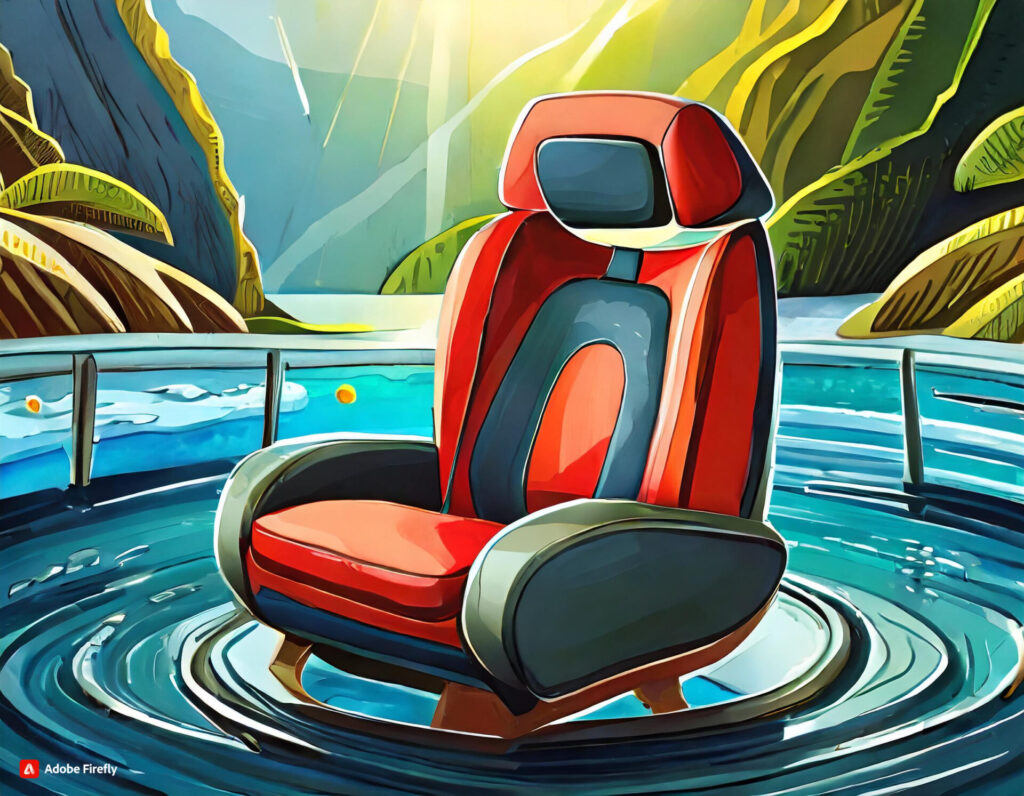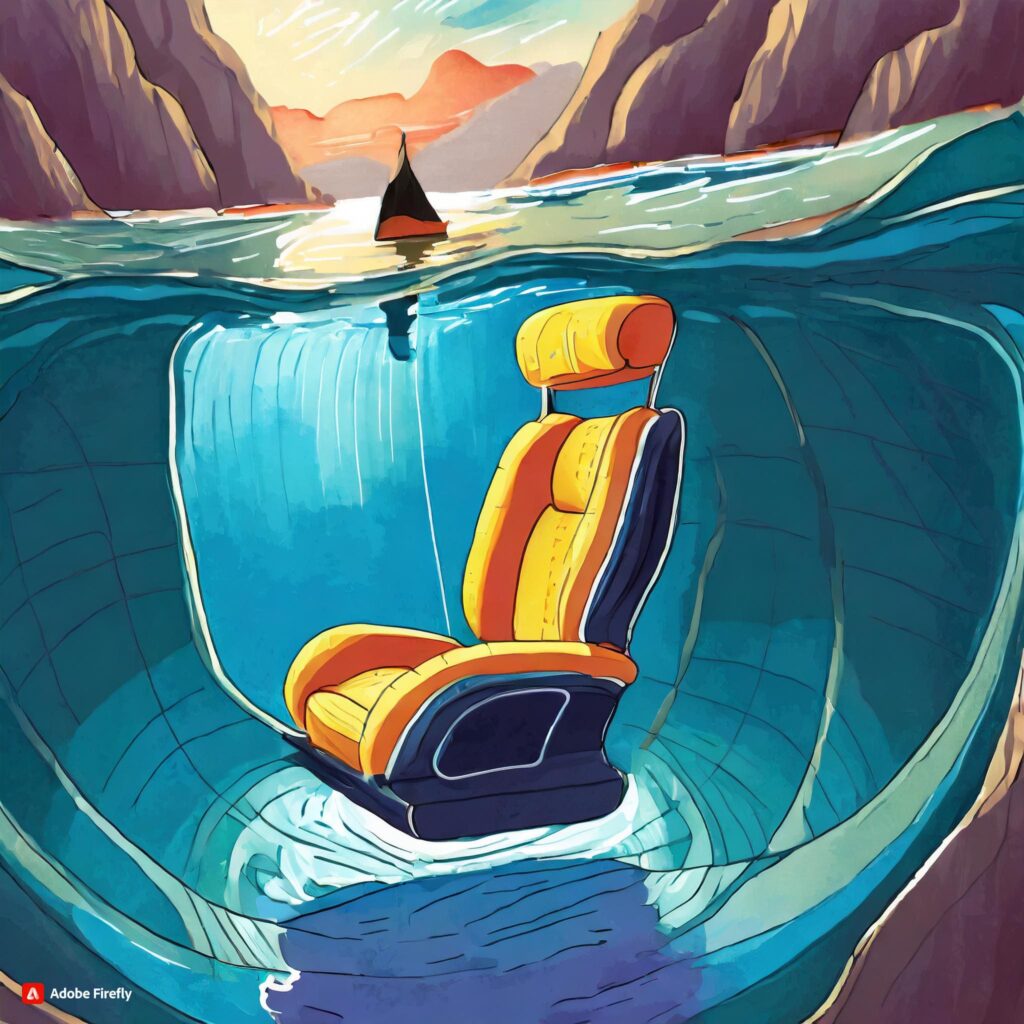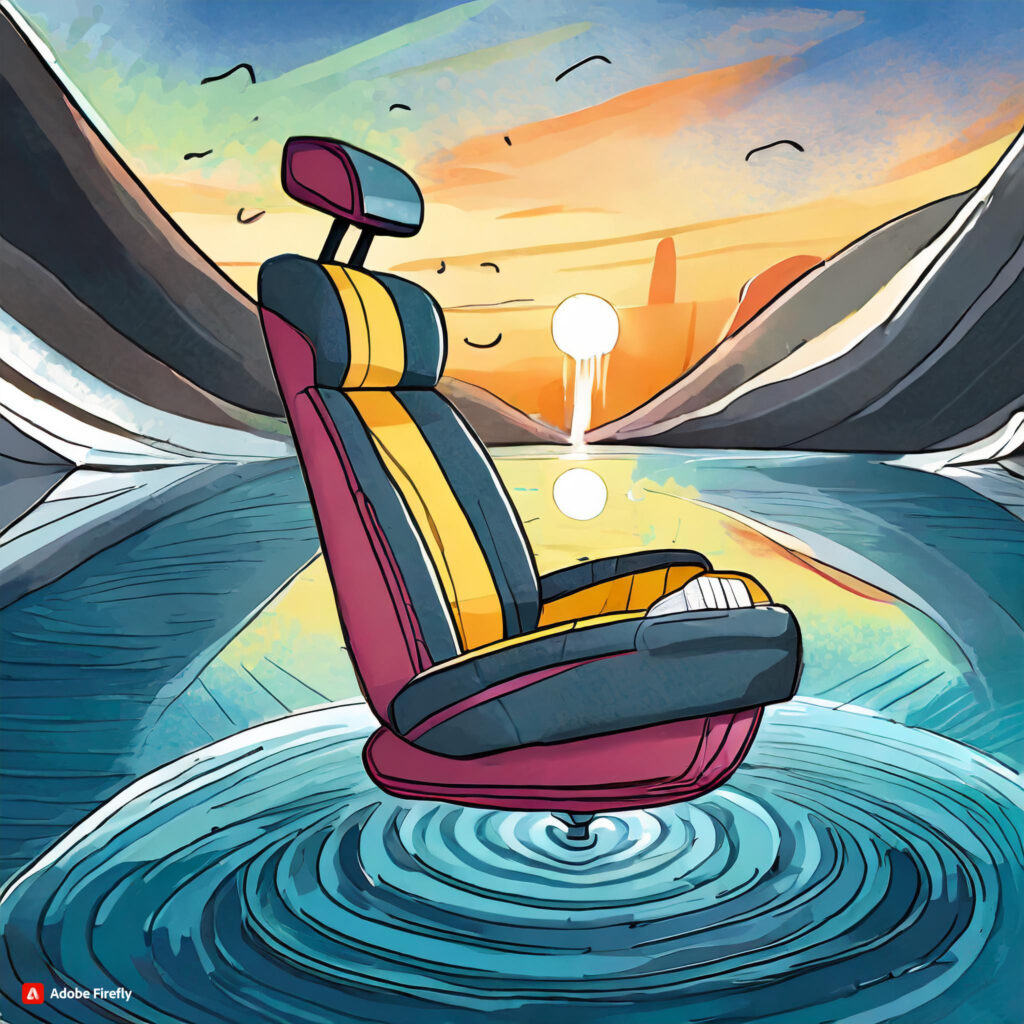Do Car Seats Float? A Crucial Guide for Child Water Safety

Ensuring your child’s safety near water is paramount, and a common question arises: Do car seats float? Imagine this: It’s a beautiful summer day, and you’re spending time with your family at the lake. Your little one is giggling with joy as they splash around in the shallows, securely buckled into their car seat. You relax for a moment, sunbathing and enjoying the peacefulness. Suddenly, your child loses their balance and tumbles into deeper water. Panic surges through you as you realize their car seat isn’t keeping them afloat, and they’re struggling to stay above the surface.
This harrowing scenario, while fictional, highlights a crucial yet often misunderstood fact: car seats do not float. Despite its familiar appearance and perceived sense of security, using a car seat as a flotation device is incredibly dangerous and can have tragic consequences. This blog post aims to dispel this misconception and equip you with essential water safety information to keep your children safe around water.
Do car seats float?
I understand your concern about finding a safe and comfortable seating option for children on boats. While the concept of a “floating car seat” sounds appealing, it’s important to understand that there are no commercially available car seats specifically designed to float and meet safety regulations for boat use.
Here’s why:
- Safety Regulations: Car seats are rigorously tested and regulated for car safety, but these standards don’t translate to water environments. Even with flotation materials, a car seat’s design with straps and buckles could pose entanglement hazards in the water.
- Certification and Buoyancy: No car seat currently holds Coast Guard approval for flotation devices. Life jackets are designed and tested to ensure they keep wearers afloat, even unconscious.
- Improper Use Risks: Using a non-approved flotation device like a modified car seat can create a false sense of security and lead to risky behavior. It’s crucial to prioritize certified life jackets for all passengers on a boat, especially children.
Instead of floating car seats, here are safe and approved options for children on boats:
US Coast Guard-approved life jackets:

- Choose a life jacket with the appropriate size and type for the child’s weight and activity level.
- Ensure the life jacket fits snugly and securely.
- Never rely on inflatable arm bands or neck floats as substitutes for life jackets.
Child boat seats:
- Some manufacturers offer boat seats designed specifically for children.
- These seats are typically secured to the boat and have features like grab handles and high backs for added support.
- Always choose a seat that meets safety standards and is appropriate for the child’s age and size.
Why don’t car seats float up?

Car seats don’t float up for several reasons:
Materials: Car seats are primarily made of heavy materials like plastic and metal. These materials don’t displace enough water to stay afloat, especially when wet. Water absorption further increases their weight, making them sink rapidly.
Design: Car seats aren’t designed for buoyancy. They have openings for straps and other features that allow water to fill the interior, adding even more weight and negating any potential air pockets.
Safety Risks: Strapping a child into a car seat in the water is incredibly dangerous. The straps could trap the child underwater, and the combined weight of the child and seat would likely sink anyway.
Here’s a breakdown of the physics involved:
- Buoyancy: An object floats when the upward force exerted by water (buoyant force) equals its weight. Car seats are simply too heavy and don’t displace enough water to create enough buoyant force to overcome their weight.
- Displacement: The amount of water an object displaces determines its buoyant force. Car seats, with their solid design, don’t displace enough water for the buoyant force to counteract their weight.
- Density: Density is the mass per unit volume. Since car seats are denser than water (heavier for their size), they sink despite any air pockets that might exist.
Remember, car seats are crucial for car safety, but they are not designed for water and can be deadly in aquatic environments. Prioritize child safety by using Coast Guard-approved life jackets that are specifically designed for flotation and have undergone rigorous testing for safety and effectiveness.
Can I Trust a Car Seat in Water?

No, you absolutely cannot trust a car seat in water for any reason. While the idea of using a familiar object for safety might seem appealing, using a car seat in water poses significant risks and should never be done. Here’s why:
1. No Flotation Ability: Car seats are not designed for water and do not float. They are made of heavy materials like metal and plastic, which absorb water and increase their weight. Additionally, straps and openings allow water to fill the interior, further decreasing any potential buoyancy.
2. Entanglement hazard: The straps and buckles on a car seat can pose a serious entanglement risk in the water. These could trap a child underwater, making it impossible for them to resurface.
3. False sense of security: Using a car seat in water creates a false sense of security. It might lead people to underestimate the danger and neglect proper safety measures like using approved life jackets.
4. No life jacket substitute: Coast Guard-approved life jackets are specifically designed and rigorously tested to keep wearers afloat, even unconscious. They have features like buoyancy aids, head support, and reflective materials for added safety. Car seats lack these crucial features and cannot offer the same level of protection.
Do Graco and Britax car seats float?
No, neither Graco nor Britax car seats float, and you should never trust them in water. Both brands, like all other car seats, are designed for car safety and pose significant risks if used in water:
Misconception: While some might think specific brands hold an advantage, no car seat, regardless of the brand, is designed for floatation or meets safety standards for boat use.
Reasons to Avoid:
- Materials: Both Graco and Britax car seats are primarily made of heavy materials like plastic and metal, which readily absorb water and sink.
- Design: Openings for straps and other features allow water to fill the interior, further increasing weight and negating any potential air pockets.
- Safety Hazards: Using a car seat in water is dangerous. Straps could trap a child, and the combined weight of the seat and child would likely sink rapidly.
Safety Alternatives:
- Coast Guard-approved life jackets: Choose one for each child based on their size and activity level. Ensure a snug and secure fit.
- Child boat seats: Some manufacturers offer specifically designed boat seats for children. Choose one that meets safety standards and fits the child’s age and size.
Safe Alternatives for Keeping Kids Afloat on Boats
While life jackets are the gold standard for keeping your little ones safe on the water, understanding other approved options can provide additional peace of mind and cater to specific needs. Here’s a dive into alternatives beyond traditional life jackets for children on boats:
Inflatable Vests:
- Pros: compact, comfortable, and less restrictive than traditional life jackets. Some models offer headrest and chin support for younger children.
- Cons: They require manual inflation, so children need to be able to activate them independently. May not be suitable for very young or non-swimming children. Check the weight and activity level restrictions carefully.
- Important Features: Look for Coast Guard-approved models with quick-release valves and oral inflation backups. Ensure a snug fit, and practice activation with your child beforehand.
Specialized Child Harnesses:
- Pros: Can be used in conjunction with life jackets for added security, particularly for toddlers prone to slipping out. Some feature tethers that attach to secure points on the boat.
- Cons: It is not intended to replace life jackets and cannot be used alone. Tethers can pose entanglement risks if misused.
- Important Features: Choose Coast Guard-approved harnesses with quick-release mechanisms and adjustable straps. Ensure tethers are the correct length and securely attached to designated boat points.
Other Considerations:
- Flotation Boards: They can be fun for older children who can swim but require constant supervision and are not substitutes for life jackets.
- Water Wings and Neck Floats: These are not considered Coast Guard-approved flotation devices and can provide a false sense of security, potentially leading to dangerous situations. Avoid using them on boats.
Myths and Misconceptions
- “My car seat has extra padding, so it will float.” (Padding absorbs water, increasing weight and negating buoyancy.)
- “I’ll only use it in shallow water.” (Accidents can happen anywhere, and deep water isn’t always visible.)
- “It’s just for a few minutes.” (Even brief submersion can be dangerous, especially for young children.)
Water Safety Tips
- Constant adult supervision: Even with life jackets, never leave children unattended near water.
- Swimming lessons: Early and ongoing swimming lessons can boost confidence and water safety skills.
- Emergency preparedness: learn basic CPR and first aid, and have a plan in case of an emergency.
- Choose the right life jacket: Ensure it fits snugly and is appropriate for the child’s size and activity level.
Legality
While there might not be explicit laws banning car seats as flotation devices in every region, using them in this context goes against their intended purpose and safety regulations. Boat safety regulations typically mandate the use of Coast Guard-approved life jackets for all passengers, including children. Using an unapproved device like a car seat could lead to fines, penalties, or even legal repercussions if an accident occurs. It’s crucial to prioritize safety and adhere to established regulations for responsible boating and water activities.
conclusion
Remember, car seats are designed for car safety and should never be used in water. Their weight, design, and lack of buoyancy make them dangerous substitutes for life jackets. Prioritizing Coast Guard-approved life jackets that fit snugly and are appropriate for each child’s size and activity level is essential. Constant supervision near water, regardless of life jackets, is crucial.
By understanding the limitations of car seats and following these important water safety tips, you can create a safe and enjoyable environment for children and adults alike. Choose certified life jackets, practice responsible supervision, and prioritize water safety knowledge for everyone. Together, we can ensure happy and healthy moments for all when enjoying water activities.
